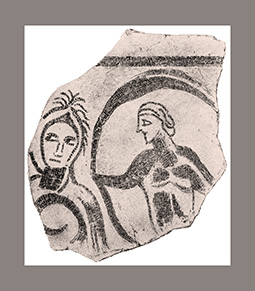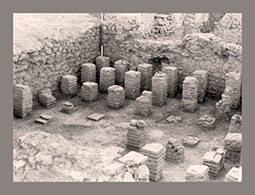 Author: D. Puglisi
Author: D. Puglisi
download article as .pdf: Arione a Comiso? Nuove osservazioni sulle terme romane di Piazza Diana
A large fragment of a black and white floor mosaic representing two human figures, was discovered in 1935 near Piazza Diana in Comiso, in the same area where, in the following years (1937 Pace’s excavations, and 1988-89 Di Stefano’s excavations), the remains of a roman bath with two architectural phases, respectively dating back to the 2nd and 5th cent. AD, were brought to light. Starting from the discussion on the iconography of the figures and on their original positioning, a general reexamination is proposed of the roman bath and of the surrounding settlement. The two figures are tentatively identified with Arion and a Nereid; probably, they were originally placed in the frigidarium of the first phase of the building. Furthermore, the bath complex, whose dimension and monumentality appear very large and disproportionate if compared to the modest extension of the surrounding settlement in the 2nd century, was probably connected with a sanctuary linked to the cult of the Ippari springs, as suggested on the one hand by some iconographical elements of the frigidarium mosaic and by the marble protome of the so called “Hipparis”, and on the other hand by some mentions in the ancient literary sources.
 This paper aims to offer an updated study on the mutatio Valentia, a Roman statio with balneum located in the south of Apulia halfway between Brindisi and Lecce, on the extension of the via Traiana. Starting from the published excavation data and the analysis of the still preserved structures, an attempt was made to identify the elements useful to outline a more accurate reconstructive proposal, also based on a comparison with other similar and contemporary structures in the region, in particular with the of Malvindi.
This paper aims to offer an updated study on the mutatio Valentia, a Roman statio with balneum located in the south of Apulia halfway between Brindisi and Lecce, on the extension of the via Traiana. Starting from the published excavation data and the analysis of the still preserved structures, an attempt was made to identify the elements useful to outline a more accurate reconstructive proposal, also based on a comparison with other similar and contemporary structures in the region, in particular with the of Malvindi.
